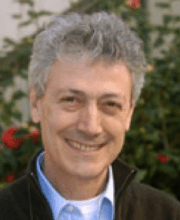Työteknikko Lyly, joka nyt pyhäkoulun tiedoillaan määräilee tam- pereleisesta tieteestäkin, tarvitsi sitä epäilemättä vielä paljon enemmän kuin Helsingin oikeustieteen kandidaatti Jan Vapaavuori…
Jan Vapaavuori
Helsinki
Kokoomus
Pormestarikoulussa Harvardissa
Vietin juuri neljä päivää New Yorkissa maailman parhaassa johtamisopissa. Kaikki luennoitsijat olivat Harvardin yliopistosta, aika tasaisesti sekä Business Schoolista ja Kennedy Schoolista. Vuoden kestävä koulutus alkoi äärimmäisen tehokkaalla yhteissessiolla. Mukana oli 40 pormestaria pääosin Yhdysvalloista, mutta myös muualta. Samalle kurssille kanssani osallistuvat mm. Atlantan, Miamin, Seattlen ja Sao Paolon pormestarit.
Koko lystin maksaa New Yorkin ex-pormestari Mike Bloombergin säätiö, joka on ylivoimaisesti maailman suurin kaupunkien kehitystä edistävä rahoittaja. Kurssi on järjestyksessään toinen. Viime vuonna kutsuttuna oli mm. Tukholman pormestari.
Opimme paljon erityisesti kaupunkien johtamisesta. Kurssilla käsiteltiin niin kaupungin sisäistä johtamista kuin yhteistyön rakentamista muiden toimijoiden kanssa, niin kansalaisten osallistamista kuin kaupungin narratiivin rakentamista. Ja paljon paljon muuta. Kaikki tehtiin periamerikkalaiseen tyyliin case study -metodilla kaikkia koko ajan osallistaen.
Hämmästelen edelleen kuinka paljon ja kuinka monenlaisia johtopäätöksiä tapauksista pystyttiin vetämään ja kuinka kaikki tämän jälkeen osattiin asettaa lopuksi rakennetun teoreettisen viitekehyksen sisään. En olisi tuossa ajassa voinut oppia enempää.
Kymmenet ja kymmenet Helsinkiä koskevat kehittämisajatukset risteilevät paraikaa päässäni. Sain myös monia hyödyllisiä työkaluja asioiden konkreettiseksi edistämiseksi. Olen erittäin iloinen, että koulutus kattaa myös kahden valitun korkean virkamiehen, Helsingin tapauksessa kansliapäällikön ja strategiapäällikön, varsin samankaltaisen, elokuussa alkavan koulutuksen.
New Yorkin jakson jälkeen koulutus jatkuu vielä koko seuraavan vuoden ajan. Odotukset tulevalle ovat korkealla.
Artikkeli Pormestarikoulussa Harvardissa julkaistiin ensimmäisen kerran Jan Vapaavuori.
Michael Bloomberg vasemmalla.
Pormestarikurssien paikka on oikea…
Toivottavasti Harvardin neuropsykologian professori Alfonso Caramazza (Bullshit-Marc Hauserin seuraaja) piti luennon aiheesta ”MIKSI JA KUINKA HAISTAPASKANTIEDE HEITETÄÄN WITTUUN YLIOPISTOSTA”!
https://hameemmias.vuodatus.net/lue/2018/07/shanghain-yliopisto-peilienurooniautismista
” Translated with Google translate, under correctning…
http://journal.psych.ac.cn/xlkxjz/EN/10.3724/SP.J.1042.2016.00958
Progress in Psychological Science 2016, Vol. 24, No. 6, 958–973
Advances in Psychological Science DOI: 10.3724/SP.J.1042.2016.00958
Myths of Autism Broken Mirror Theory: Origin, Problems and Prospects*
Pan Wei 1 Chen Yu 2,3 Wang Wei 4 Shan Chunlei 5

Prof. Caramazza’s research exploresthe nature and organization of language processing and conceptual representations in the brain.His earlier work focuses on lexical access and language comprehension; he has studied these topics extensively in patients, documenting a series of dissociations within the language system in the presence of neurological injury (e.g., after stroke). In addition to patient work, his research group also explores the neural organization of language processing (e.g., grammatical category, action content) in healthy individuals using a variety of research techniques including functional magnetic resonance imaging (fMRI), transcranial magnetic stimulation (TMS), and behavioral techniques.
3.2 MNS
At most the incidental cause of social cognition even if we ignore humans MNS indirectness of research,MNS the relationship with social cognition does not seem so close. First of all, society will recognize that the effective imitation required in-volves visual analysis, characterization,cognitive process such as action selection.
These features are obviously not MNS place simple action copying that affects.
Caramazza, Anzelotti, Strand with Lingnau (2014) Point out, Mirror neurons in action In understanding, only involved in the process of converting actions into visual representations. Cheng, in this sense, it cannot be considered that mirror neurons have actions.
… ja seurakin on varmaan pääasiassa kehittävää:
Vapaavuoren minitsemista suurkaupungeista Sao Paulo on maailman tiedehuippujen joukossa (sanotaan viiden parhaan joukossa ja ennen Tukholmaa, jossa myös sörssitään raskaasti): siellä on käksi jättiläismäistä yliopistoa, valtiollinen ja yksityinen, jotka sekä kilpailevat tieteellisllä tuloksilla että toimivat tarvittaessa myös yhdessä, vaikkapa tuossa ”kuumassa” neurofysiologiassa:




Yksi selkeä elämänohje, jonka toivottavasti Koivulakin joskus elämässään käsittää, on ettei arvota ihmistä pelkästään koulutustaustan kautta.
Selkeäsanainen työteknikko näyttää hyvinkin olevan älykkäämpi kuin sekavasti ja polveilevasti kirjoittava dipl.insinööri tai itse itsensä tieteilijäksi korottanut.
Kiihkoilevia leikkaa-liimaa kavereita kyllä riittää, oli koulutus heillä mikä tahansa.
Järkeä näillä ei sen vertaa, että teksisi tekstistään luettavan.
Ei Vapaavuori ole diplomi-insinööri.
Kiitoksia, virhe korjattu. Oikeustieteen kandidaatti. Selviytynyt ainakin pottumaista pääsykokeista.
Ainoa tilanne, jossa minä arvioin ihmisiä koulutuksen mukaan, on se kun ruvetaan riehumaan tieteessä ilman tietoja ja taitoja. Tieteen ulkopuoliset tiedot eivät auta sen ”sisällä” mitään. Ja tohtorikinvoi olla puoskari, ainakin Suomessa.
Eipä tuonne ketä tahansa kyllä otetakaan, sinne ei pääase omalla maksulla, vaan säätiö kutsuu.
Vapaavuoreen on satsattu. Täydellinen arvoitus on toistaiseksi, missä mielessä. Tukholmaan on satsattu samassa mielessä.
Heikkous on että pormestariksi pääsee politiikan keinoin ja siksi meillä on taitamattomuutta päätöksenteossa.